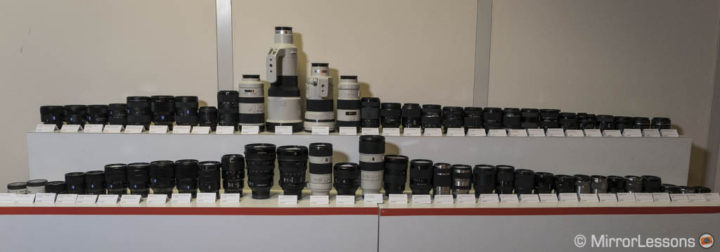
The Sony a6500 is the most recent camera in the APS-C E-mount series, packing all the most advanced features the system has to offer such as a 24MP sensor, an advanced hybrid AF system, 5-axis sensor stabilisation, 4K video, a touch sensitive screen, a built-in EVF, and much more.
As any E-mount user knows all too well, choosing lenses for a Sony APS-C camera like the new a6500 isn’t an easy task. The first problem is that while a handful of fast primes do exist, most lenses for the APS-C system tend to be zooms with a slow aperture range. To make matters worse, there hasn’t been a new lens designed specifically for the APS-C system in over three years despite Sony having released a number of APS-C cameras in that time.
You could argue that the best solution is to use full-frame E-mount lenses designed for the Sony FE range instead, but barring a couple of exceptions, most of these lenses tend to be a) too large for an APS-C sized body, and b) very expensive.
No matter which way you look at it, Sony APS-C users have it tougher than users of other systems!
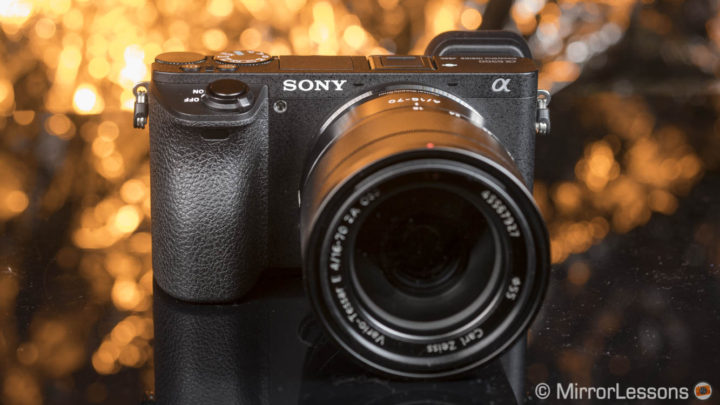
In this article, our aim is to clear up the confusion surrounding the choice of E-mount lenses for the Sony a6500. To make it as straightforward as possible, we’ve organised the lenses according to photographic genre and included both high-end and affordable options to accommodate all budgets. Since the camera incorporates sensor stabilisation – a first for an APS-C model – we will be including lenses both with and without optical stabilisation.
Note: When it comes to the Sony E-mount system, you’ll find a wide variety of manual focus and third-party lenses from Canon, Nikon, Sony A-mount and Sigma that you can adapt. However the performance will vary depending on the camera and adapter used. In this article we will concentrate on lenses with a native E-mount.
Ethics statement: The following list is based upon our experience with the following E-mount lenses, many of which we’ve used for an extended period. We were not asked to write anything about these lenses and were not provided any compensation of any kind. Within the article, there are affiliate links. If you buy something after clicking the link, we will receive a small commission. To know more about our ethics, you can visit our full disclosure page. Thank you!
Best a6500 Lenses for Landscapes
1. E 10-18mm f/4 OSS
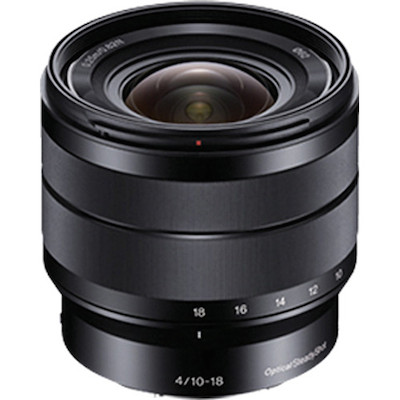
At the time of writing, the only extreme wide-angle zoom with a constant aperture for the E-mount is the E 10-18mm f/4 OSS, whose focal range equates to 15-27mm in 35mm format terms.
Its flexible wide focal range, coupled with the constant f/4 aperture, makes it a great tool for a variety of landscapes, cityscapes and architecture. Being so small and light, it doesn’t overwhelm the compact body of the a6500 and the barrel construction is fairly solid. It features a 62mm filter thread to which you can attach filters and a minimum focus distance of 25cm. The focusing isn’t as fast or accurate as more recent lenses, but this matters less for landscape work.
At the most important apertures for landscapes (f/5.6 to f/11), the lens is very sharp across the frame. Distortion, chromatic aberration and flare are all very well controlled.
Check price on B&H Photo
2. Zeiss Touit 12mm f/2.8
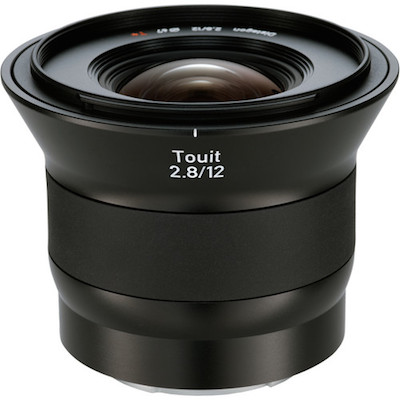
Despite a lack in popularity driven by their exorbitant price at the time of their release, the Zeiss Touit lenses are actually a good match for the a6000 series. The 12mm (18mm in 35mm format) provides excellent sharpness across the frame and through the aperture range, and its fast aperture paired with its minimum focus distance of 18cm allows you to achieve some shallow depth of field if you so desire.

A small drawback of the Touit 12mm is that it lacks a distance and depth of field scale on the barrel. As such, you’ll have to rely on the autofocus or the distance scale on the camera screen.
The main reason I am recommending the 12mm is because the price has plummeted since its release. Originally over $1200, it is now available in the region of $700 and even less second-hand.
Check price on eBay / B&H Photo
Affordable option: Sigma 19mm f/2.8 EX DN
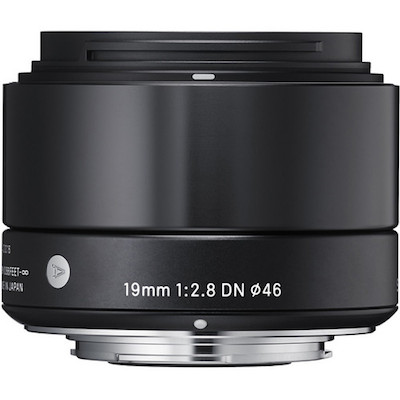
One of the more affordable options that still manages to provide great optical quality is the lightweight and very compact Sigma 19mm f/2.8. Offering the equivalent angle of view of 28.5mm in 35mm terms, it isn’t as wide as the other lenses in this section but is still perfectly suitable for landscape work.
Sharpness is very good in the centre but it deteriorates as you move toward the edges, with the best results being achieved between f/8 and f/11. It has a minimum focus distance of 20cm and a fast-ish aperture of f/2.8, so you can achieve some shallow depth of field.
The autofocus is fast but bear in mind that you will only be able to access the phase detection points (PDAF) in the centre when using the a6500.
Amazingly, this lens costs just under $200 brand new and even less second-hand, making it a very difficult proposition to ignore.
Check price on eBay / B&H Photo
Affordable option: Samyang / Rokinon 12mm f/2 NCS CS
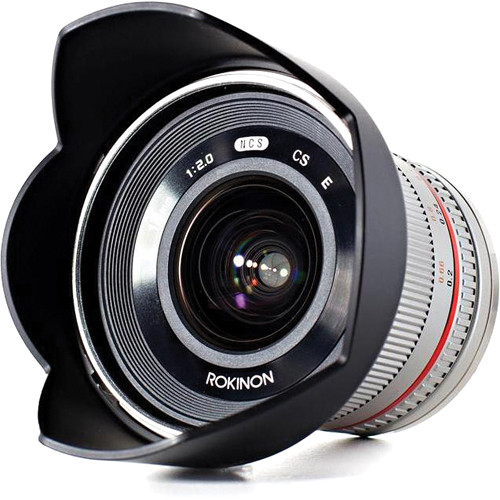
If you are a Sony APS-C user and you don’t mind using manual focus lenses, the Samyang / Rokinon 12mm f/2 deserves a place in your camera bag.
Renowned for its lack of coma aberrations for astrophotography, this lens is sharp from edge-to-edge even at its fastest aperture of f/2. The barrel has nearly all the features a landscape photographer could desire: a focus ring, clicking aperture ring, and focus distance scale (though the markings are somewhat inaccurate). Since it lacks depth of field marks on the barrel, you’ll have to rely on Sony’s manual assists such as magnification or focus peaking.
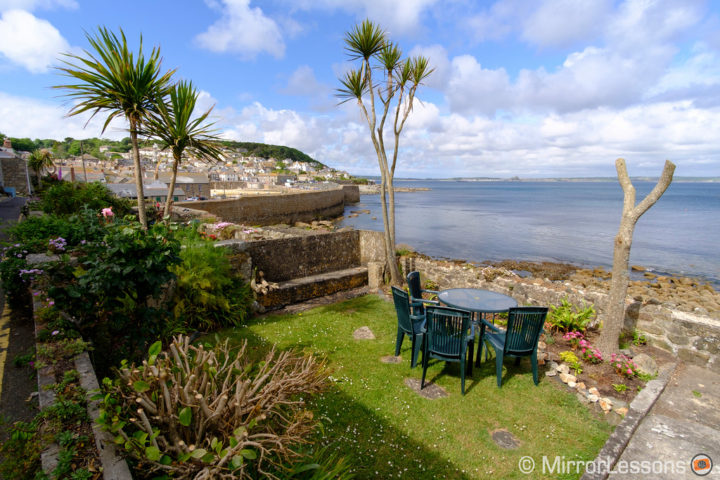
It doesn’t feature optical stabilisation but this matters less as the a6500 has sensor stabilisation. All you need to do is input the focal length manually and the camera will use 3 axes. The only annoyance is that it doesn’t transmit EXIF data, so you’ll have to record that information elsewhere if it is important to you.
Like the Sigma 19mm, the price of this lens should prove very appealing. You can currently find it for just over $300 brand new and even less second-hand.
Check price on eBay / B&H Photo
Best a6500 Lenses for Portraits
1. FE 55mm f/1.8 ZA
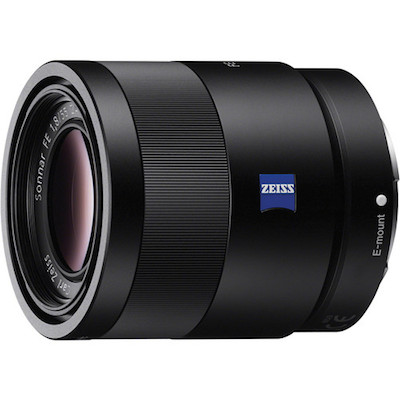
Our favourite lens for the E-mount system is the FE 55mm f/1.8, a standard full-frame prime that becomes a portrait lens with an 82mm equivalent field of view when paired with an APS-C sensor.
Not only is it extremely sharp at all the important apertures (even its fastest value of f/1.8) but it is also very compact for a full-frame lens and produces a lovely bokeh – perhaps one of the nicest of all the lenses in the series. It features a solid metal dust-and-moisture resistant construction and comes with a very quick and reliable autofocus mechanism, meaning you should experience no hesitation from the lens when locking onto the eye of your subject.

The lack of optical stabilisation was a limit with the non-stablised a6000 and a6300 bodies but is no longer an issue thanks to the 5-axis sensor stabilisation of the a6500.
The 55mm is admittedly quite expensive at just shy of $1000 but if portraiture is your primary genre, it is worth every penny.
Check price on eBay / B&H Photo
2. Zeiss Batis 85mm f/1.8
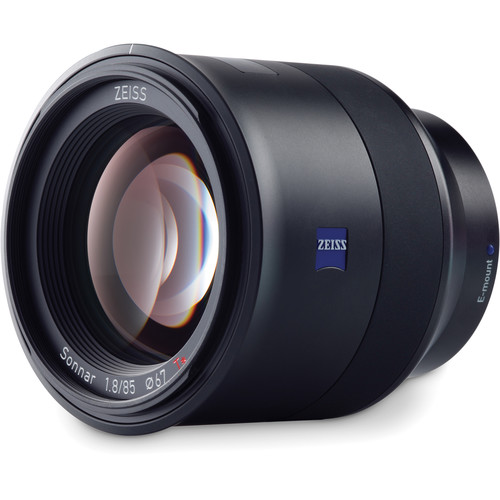
Another gorgeous portrait lens for the E-mount system is the full-frame Batis 85mm f/1.8 from Zeiss. Offering an equivalent 127.5mm field of view in 35mm format, this lens is perfect for head shots on APS-C bodies because of the compressed perspective.
An attractive attribute of the Batis is the swirly bokeh which draws your attention to the subject at the centre. It isn’t as clinically perfect as the bokeh produced by the FE 85mm f/1.4 (the largest and most expensive portrait lens for the system) but it has loads of character.

The lens features optical stabilisation and will work in conjunction with the in-body stabilisation (3 axes on the sensor and 2 axes on the lens). However, you can’t ignore the size and weight, which is close to the maximum you’d want to use on an APS-C sized body.
Check price on eBay / B&H Photo
Affordable option: E 50mm f/1.8 OSS
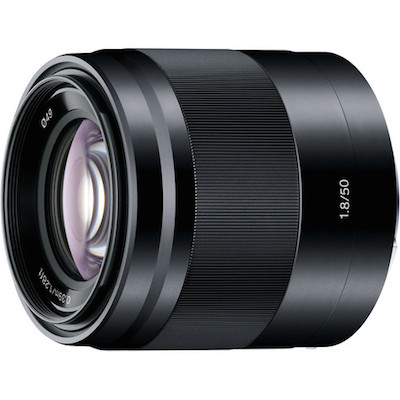
When you think of portrait lenses for the APS-C system, the 50mm f/1.8 is likely the first option that comes to mind. It isn’t very expensive at just under $300, features a compact and lightweight construction, and offers a 75mm field of view in 35mm format, which is perfect for portrait work.

With the f/1.8 aperture, you can achieve good subject separation and a beautiful bokeh, and easily work in low-light conditions. The autofocus is also very quick and accurate, so you can rest assured that you won’t miss the shot.
Since the lens features optical stabilisation, the camera will use 3 axes in-camera and 2 axes on the lens to achieve 5-axis stabilisation.
Check price on eBay / B&H Photo
Affordable option: Sigma 60mm f/2.8 DN
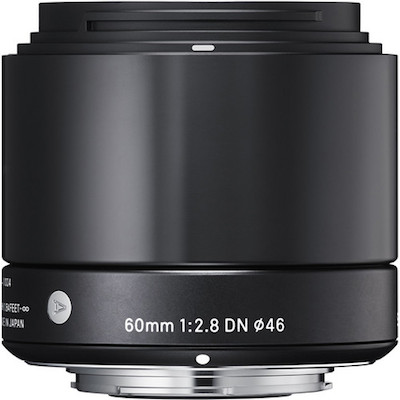
Here we have another lens from the extremely affordable Sigma DN Art series: the 60mm f/2.8 (90mm equivalent in 35mm terms). Like the aforementioned 19mm, this portrait lens is very light and compact and delivers excellent sharpness where it counts. Its maximum aperture isn’t as fast as other lenses in this section but it is good enough if you are just getting your toes wet with the portrait genre.

The only limitation is the AF performance. Phase detection only works at the very center; otherwise the lens relies on contrast detection. It works well in S-AF with static subjects but has a difficult time keeping up with moving subjects in C-AF.
For this lens you’ll be shelling out less than $250 for a brand new copy and much less second-hand.
Check price on eBay / B&H Photo
Best a6500 Lenses for Action
1. FE 70-200mm f/4 G
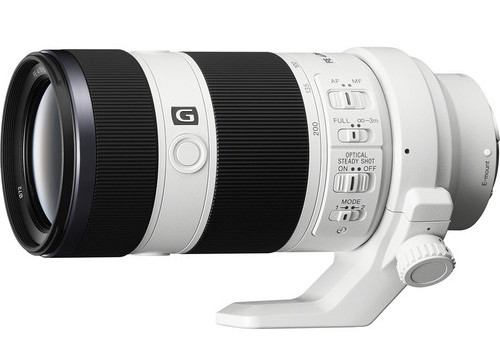
Ask any Sony user which is the best action lens for APS-C cameras and they’ll undoubtedly say the FE 70-200mm f/4. Once again, we are talking about a lens for the full-frame series but it is compact enough to be used on an a6500, especially since its grip has been enlarged in comparison to previous models. (By contrast, we feel that the new FE 70-200mm f/2.8 is far too large and heavy to be suitable for the a6500.)
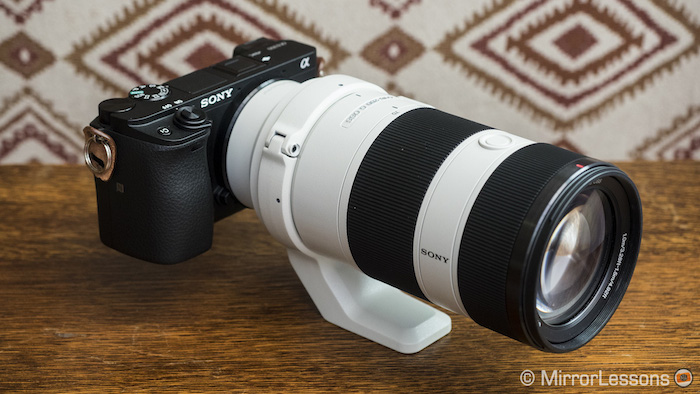
The f/4 version offers a versatile focal range that equates to 112-320mm in 35mm terms, giving you lots of reach for sports and wildlife. In addition to being very sharp at all apertures and focal lengths, the autofocus mechanism is quick when coupled with the a6500’s 425 on-sensor phase detection AF points and the constant f/4 aperture is good enough for outdoor action in good light. In poorer light conditions, you will have to raise your ISO as high as 12800, which is still a useable value on the a6500 if your images are destined for online use or a newspaper.
Check price on eBay / B&H Photo

2. FE 70-300mm F4.5-5.6 G OSS
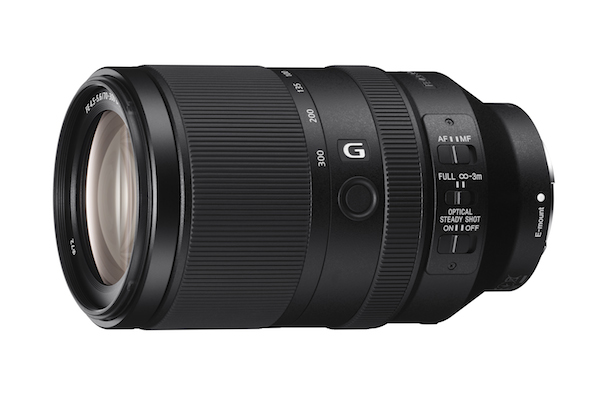
If you need even more reach than the 70-200mm, the next best option is the 70-300mm f/4.5-5.6. Where you lose that constant aperture of f/4, you gain an equivalent reach of 450mm in 35mm terms.

Like the 70-200mm, this zoom is sharp regardless of the aperture or focal length to which you set it, and the autofocus mechanism is quick and accurate. The only limit is once again the aperture range, which will force you to use high ISO values in low-light conditions.
Check price on eBay / B&H Photo
Affordable option: E 55-210mm f/4.5-6.3
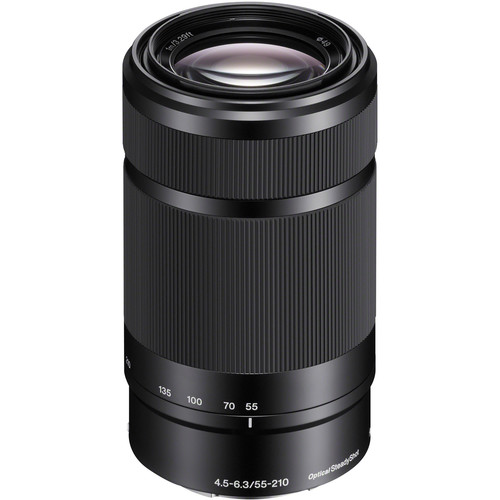
Those on a tight budget will have to satisfy themselves with the 55-210mm f/4.5-6.3. With an equivalent focal range of 83-315mm, it suits both sports and wildlife in good light conditions and comes with a fairly fast autofocus mechanism and magnesium alloy chassis to boot.
The sharpness from this zoom won’t match that of the 70-200mm or the 70-300mm but it is good enough for casual action photography, and it costs about a third of the price. If you are just started to dabble in action photography, this zoom is a practical place to start.
Check price on eBay / B&H Photo
Best a6500 Lenses for Street
1. E 35mm f/1.8 OSS
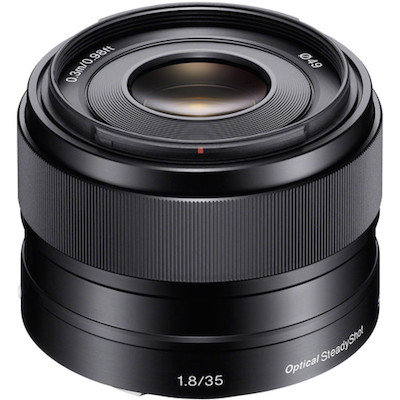
Street photography is one of the most flexible genres, as you can use pretty much any lens and produce interesting results. That being said, you’ll often see many photographers using a standard focal length (around 50mm in 35mm format) because it provides a field of view similar to that of the human eye.

The 35mm f/1.8 (52mm in 35mm format) was one of the first lenses for the APS-C system and remains one of the best for street work. Thanks to its fast aperture, you can achieve a nice shallow depth of field and work in poor light conditions with the combined optical and sensor stabilisation. Sharpness is great where it counts and being so small, it pairs well with the a6500 body. It is also fairly priced at just under $450.
Check price on eBay / B&H Photo
2. Sony Zeiss 24mm f/1.8 ZA
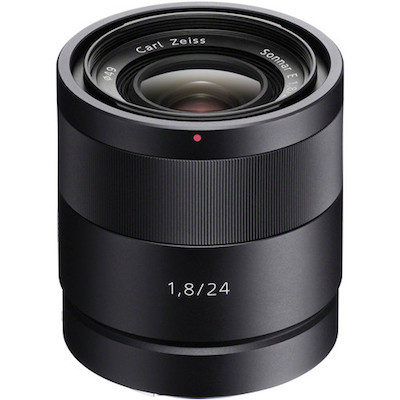
The 24mm f/1.8 is a bit wider than the 35mm f/1.8, providing an equivalent field of view of 36mm in 35mm format. It is recognised as one of the best E-mount lenses in the range, not just for street photography but also generally speaking.
It is incredibly sharp through the aperture range, comes with fast aperture of f/1.8, is quick and silent to autofocus, and features a solid metal build. Size and weight wise, it balances perfectly on the a6500 and all other APS-C cameras.
But before you whip out your wallet, there is the price to consider. Though it was released four years ago, you’ll be hard pressed to find this lens for much less than $700 on the second-hand market.
Check price on eBay / B&H Photo
Affordable option: Sigma 30mm f/2.8 DN
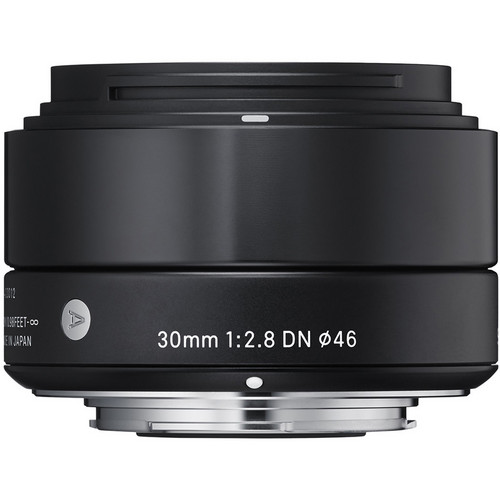
Sigma returns to this list with the third lens in the DN Art series, the 30mm f/2.8 (45mm equivalent in 35mm terms). Sitting in between the wide 19mm and the 60mm portrait lens, the 30mm is a very affordable solution for street and documentary work at just over $150 brand new.

Considering the price, the optical quality of this lens is superb and the relatively fast aperture will let you work in poor light conditions when combined with the camera’s in-body stabilisation. It has a decent minimum focus distance of 30cm, a smooth and fast autofocus motor, and is small and light enough to use on any APS-C body. Note that like the 19mm and 60mm, the 30mm will only use the centre PDAF zone with the a6500.
Check price on eBay / B&H Photo
Best a6500 Lenses for Macro
1. FE 90mm f/2.8 macro
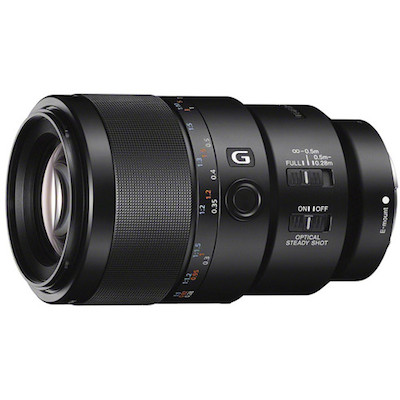
One E-mount lens I immediately fell in love with the minute I started using it was the FE 90mm f/2.8. Like some of the other options here, it has been designed primarily for the full-frame system but can also be used on the a6500 as a 135mm macro or portrait lens.

If we ignore the size and weight, both of which are substantial, there is every reason to enjoy using this lens on the a6500. In addition to 1:1 magnification, it also offers quick autofocusing and optical stabilisation. On the barrel, you’ll find lots of assists, including a focus limiter switch, a focus hold button and a useful sliding focus ring for AF/MF selection. And it goes without saying that the results from this lens are pin-sharp.
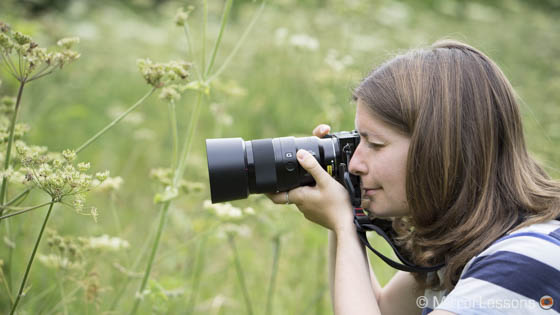
The optical quality is so good that is also works as a more than decent portrait lens at f/2.8.

This lens will set you back just over $1000 but it is worth considering if your main focus is macro photography and also want a good medium telephoto for casual portraits.
Check price on eBay / B&H Photo
2. FE 50mm f/2.8 macro
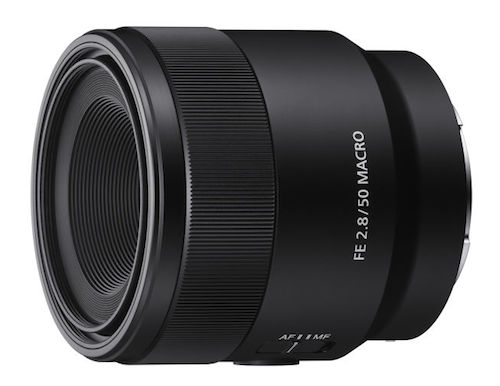
A second macro option that was just recently announced is the FE 50mm f/2.8. In all honesty, we haven’t had the chance to try this lens yet because it is so new but initial reviews suggest that it is a good all-round performer with a lightweight and compact build, dust-and-moisture resistance, 1:1 magnification, excellent sharpness, and good resistance to chromatic aberration, flare and distortion. However, at just under $500, it isn’t cheap. We will update this section once we’ve spent some quality time with this lens!
Check price on eBay / B&H Photo
Affordable option: E 30mm f/3.5
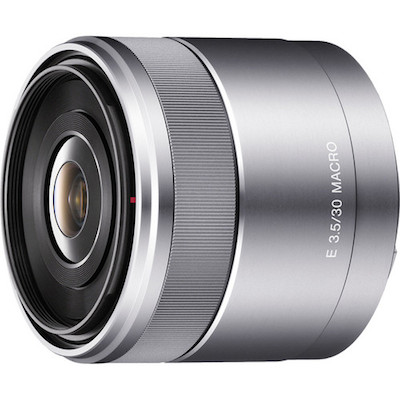
The final macro lens we’d recommend is the 30mm f/3.5, which has been around for almost as long as the system itself. Though it isn’t as sharp as the 90mm, it offers a useful standard focal length, 1:1 magnification and a very compact build that suits the a6500 better than either of the two lenses above.
Being so small, there isn’t any room for assists on the barrel but it does make space for a fly-by-wire focus ring for manual focusing.
It is also the most competitively priced option at just under $300 new and even less second-hand.
Check price on eBay / B&H Photo
Conclusion
The a6500 is yet another exciting E-mount camera that promises to sell just as well as its predecessors. Instead of targeting amateurs, it has been designed to grab the attention of enthusiasts, advanced and professional users who either wish to switch to a mirrorless systems or add a second, more portable body to their kit to use alongside their professional gear.
Since the target market of the a6500 is quite different from the other cameras in the APS-C line-up, our hope is that Sony will now begin to invest in a new range of high-quality primes and zooms designed specifically for this camera and its successors in the years to come. After all, good cameras deserve a wider range of good glass, don’t you agree?
